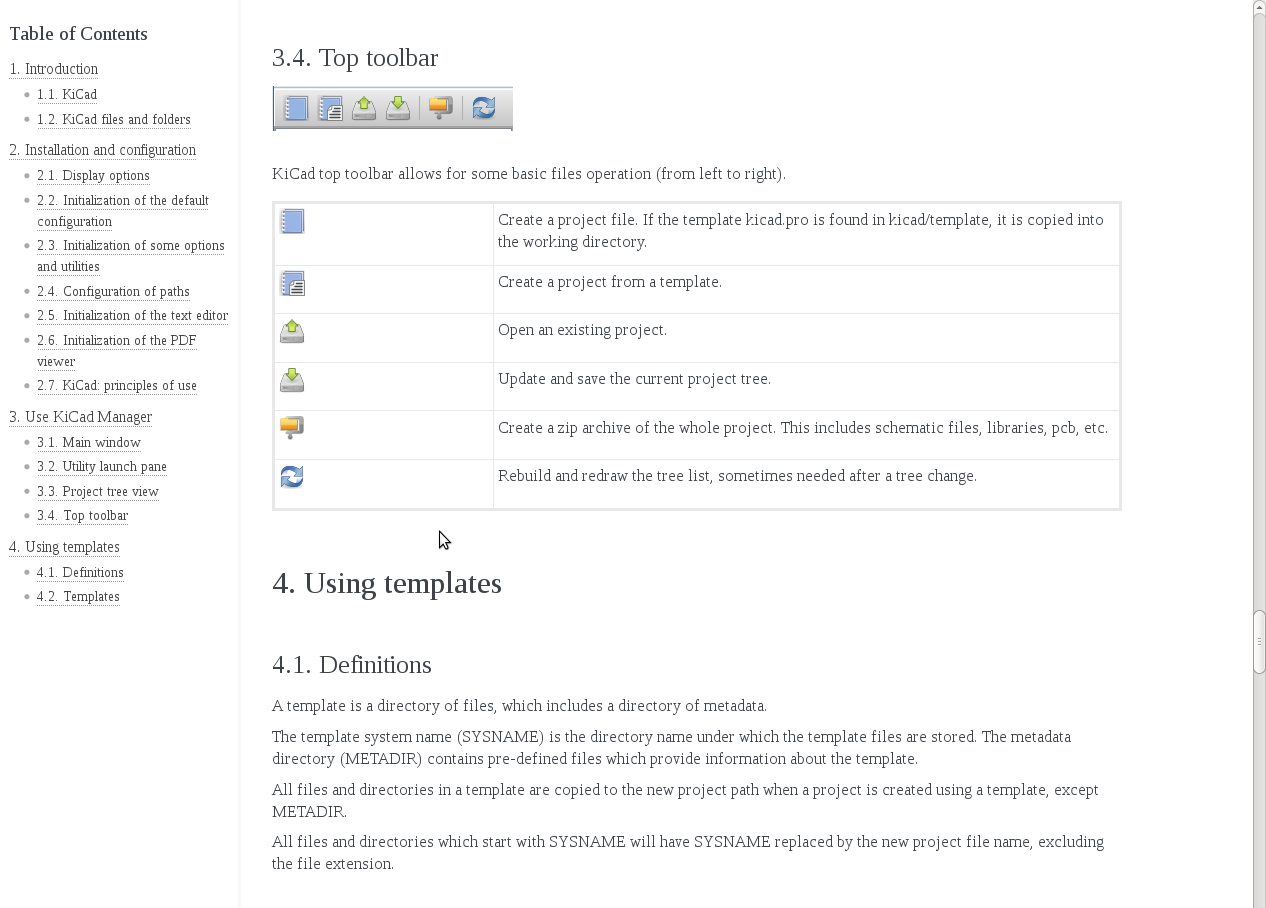
This document is used to display the Style Guide for KiCad and shows the formatting and is a writing guide line that shows how to format certain common used elements.
Headings are numbered. This is true for headings of level 1 to level 4. Fifth level headings are not numbered.
First level headings are used to form chapters. They may stand alone and contain no sections.
Headings are written with capital letters for each noun, verb, adjective and adverb.
Second level headings are used to form sections. Second level headings may only exist if there are more than one section per chapter or the section contains more than one subsection.
Third level headings are used to form subsections. Third level headings may only exist if there are more than one subsection per section or the subsection contains more than one sub-subsection.
Fourth level headings are used to form sub-subsections. Fourth level headings may only exist if there are more than one sub-subsection per subsection.
Fifth level headings are only used for subheadings and do not form sections or subsections. They are not numbered. There are not headings beyond fifth level.
Lists of elements are per default unordered lists. Unordered lists use the bullet character (•) for the first level and the n-dash (–) for second and deeper levels. Note that two levels should not be exceeded. A "en space" charakter seperates the list entry and the "bullet" character.
Ordered lists are usually only used for working instructions and other places where the order of the listed elements is important. More than two list levels are not useful and therefore not allowed.
| First Table Heading | Second Table heading | Third |
|---|---|---|
| First Table Item | Second Table Item | 3rd |
| First Item Second Row | Second Item Second Row | 2nd 3rd |

#!/usr/bin/python
from pcbnew import *
libpath = "/usr/share/kicad/modules/sockets.mod"
lst = FootprintEnumerate(libpath)
for name in lst:
m = FootprintLoad(libpath,name)
print name,"->",m.GetLibRef(), m.GetReference()
for p in m.GetPads():
print "\t",p.GetPadName(),p.GetPosition(),p.GetPos0(), p.GetOffset()
This is a Note. Notes replace Footnotes since Footnotes have little use in long online documents. The reader is not very happy having to scroll through the whole document to find your footnote and then scroll back and find the place where he paused reading.